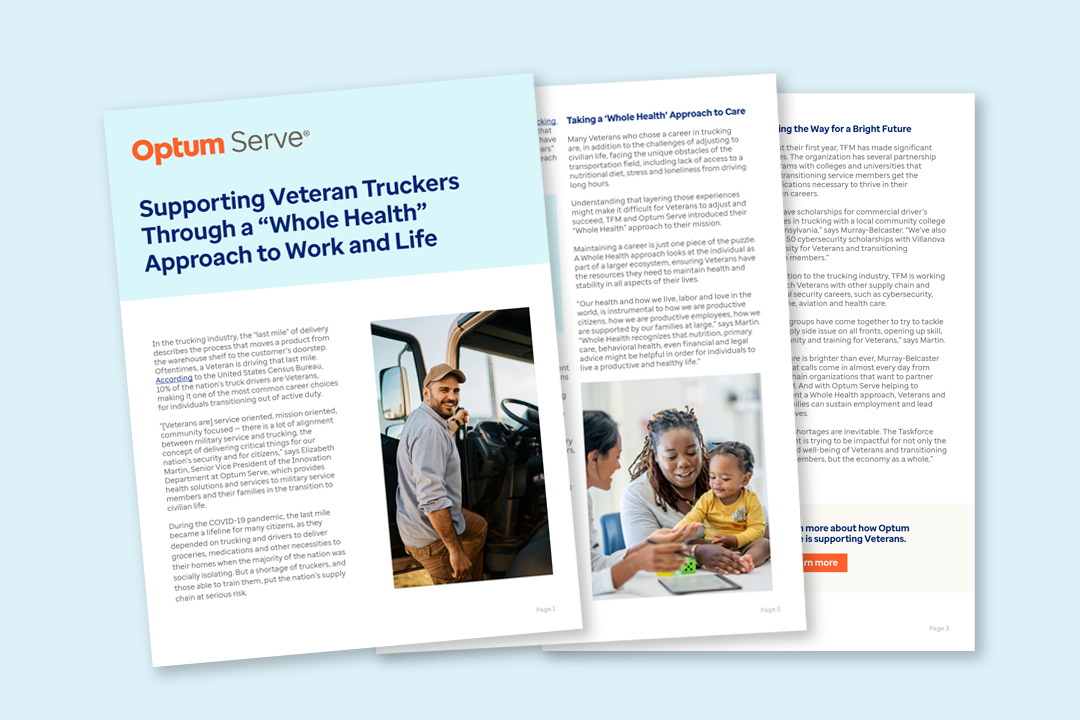Explore insights by category
Data and analytics | Finances and payments | Mental health | Patient and member engagement | Pharmacy care | Pharmacy management | Technology and automation | Value-based care | View all
Latest featured insights

Article
Learn how health plans can fill care gaps by offering greater support and personalized solutions for women experiencing menopause.
![A Quarter-Century of Pharmacy Benefit Changes [E-Book]](/content/dam/optum-dam/images/business/pharmacy/hand-with-vial-1080x720.jpg)
E-book
Explore the dramatic changes in the years since 2000 — in drug performance and design, and especially affordability.

Article
Explore how evidence-based tools like The ASAM Criteria® Navigator and InterQual® Substance Use Disorders Criteria are helping payers and providers efficiently and effectively navigate the complex substance use disorder landscape today.
![Automation Strategies for Empowering Staff and Patients [Webinar]](/content/dam/o4-dam/images/professionals/company-meeting-1080x720.jpg)
On-demand webinar
Learn how to help transform hospital revenue cycle operations with healthcare automation.
Data and analytics

Article
Understand how routine clinical practice impacts information captured in real-world data (RWD).

On-demand webinar
Hear from experts in this Endpoints News webinar on the increasing importance of clinicogenomic data, including diverse phenotypic and genotypic profiles.

Video
Optum Life Sciences leaders break down common missteps when using RWD and how to create practical strategies to overcome them. Watch the video from STAT Summit.

Article
Providers collect data about patients every day. But what should they be considering — and doing — to put their clinical data to good use?
Finances and payments

Article
Discover 4 ways health plans can save money today — and in the future — by engaging with a digital claim payment partner.

Article
Learn how AI is changing the fraud case review process.

Article
The connection between money and health runs deeper than just costs — your employees rely on your benefits strategy for overall wellness.

Article
Learn how payment delivery optimization can improve the healthcare financial cycle and bridge the gap between payers and providers.
Mental health

Article
Learn more about the current research on mobile crisis teams (MCTs), how to build an MCT as well as envision a future for them.
Article
Recognizing the unique perspectives of neurodivergent individuals and creating an inclusive workplace can enrich and empower your teams.
![Helping Members Find In-the-Moment Support [Video]](/content/dam/optum-dam/resources/videos/business/ews-member-testimonial-video/ews-member-testimonial-video-thumbnail-1080x720.jpg)
Video
See how one mother found in-the-moment support during a family crisis.

Article
The collision of chronic conditions and behavioral health challenges can’t always be stopped, but healthcare leaders can work to mitigate its impact.
Patient and member engagement

Article
Learn how Optum Serve is helping to advance the health and well-being of Veterans and spouses in the trucking and cybersecurity workforce.

Guide
Learn how Optum Serve helped Veterans achieve health and wellness goals, promoted well-being, prevented illness and reduced the burden of chronic conditions.

White paper
Learn how Optum Serve supports Veterans through a whole-health approach to work and life.

Article
The story of Kayla Perno, an Optum Care Coordinator, demonstrates how dedication to compassionate care leads to better outcomes.
Pharmacy care

Article
In today’s healthcare landscape, the introduction and increasing use of biosimilars offers a promising solution to rising medication costs.

Article
Learn about 5 strategies for consistent medication use and how Optum Specialty Pharmacy can help.

Article
Learn how a holistic model enhances multiple sclerosis care.

Article
Optum tackles the many issues infusion pharmacy care faces as it serves vulnerable patients with acute needs and complex conditions.
Pharmacy management

Article
From tariffs to GLP-1s and AI, see which pharmacy topics led the conversation — and why they still matter going into 2026.

Article
Two AI experts share insights on how we’re using AI and advanced technology to improve everything from trend prediction to member services.

Article
In this conversation, get a peek into upcoming solutions and technologies designed to address high-cost medications.
![First Oral GLP-1 Drug for Weight Loss [Report]](/content/dam/optum-dam/images/business/pharmacy/pharmacist-with-pills-1080x720.jpg)
Report
Explore 3 new drugs for chronic conditions including obesity, severe asthma and hives (also known as urticaria).
Technology and automations

Case study
Using digital integration to ease administrative burdens can help you spend more time with patients and deliver positive patient outcomes.

White paper
Read the white paper for strategies on controlling fixed costs, efficiency and organizational flexibility.

Case study
See how Lima Memorial improved efficiency with advanced technology.

On-demand webinar
Watch the webinar to learn actionable strategies on tackling decreased hospital margins, increased labor costs and staffing shortages.
Value-based care

Article
Learn how employers can bridge the wellness gap through workplace wellness programs that offer personalized, practical and human support.

Article
Digital MSK can improve outcomes while reducing costs. Learn how payers and employers can choose a program that delivers on health benefits and savings.

Article
Gen Z is changing workplace expectations — employers must evolve benefits to keep up..

Article
Learn how payers can drive meaningful impact through preconception care, postpartum coaching and managing chronic conditions early.
